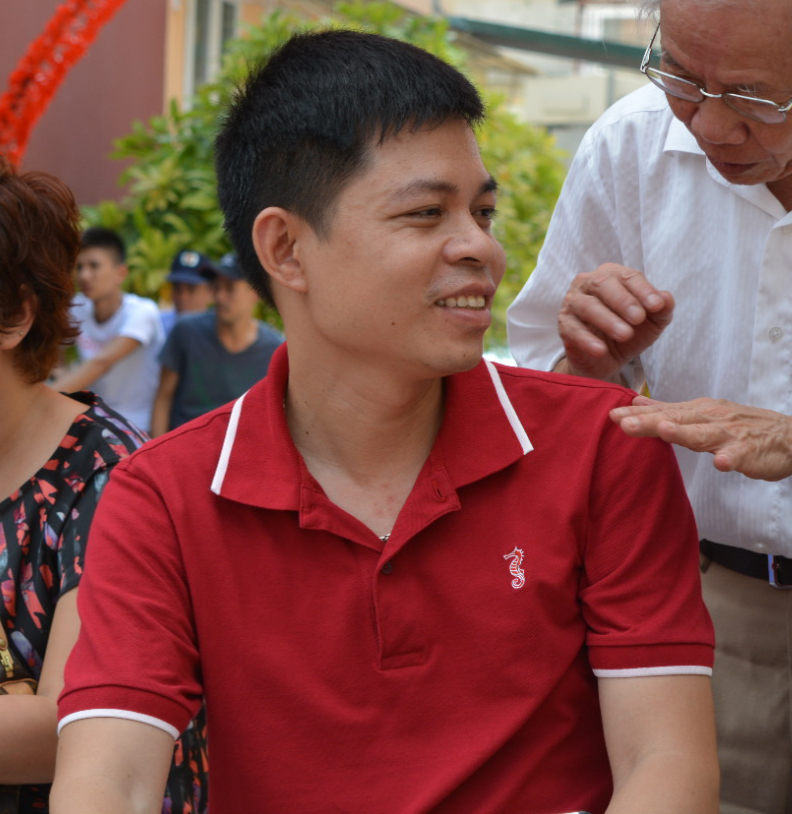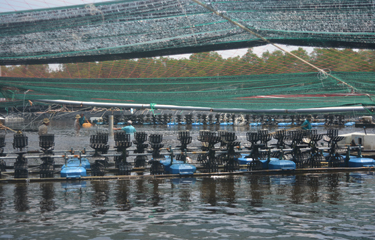Vietnamese shrimp giant Minh Phu Seafood is hoping its new shrimp farming technology, financially facilitated by Japanese Mitsui’s share purchase, will create a fundamental change in the shrimp aquaculture sector.
Minh Phu inked deal to sell a 35.1 percent stake to Mitsui in May. In June, the company said the majority of the VND 3.038 trillion (USD 130 million, EUR 115.9 million) it got from the deal would be allocated to aid its business operations.
Currently, Minh Phu can meet roughly 10 percent of its material shrimp demand through via own supply, with the remainder coming from local farmers and imports. The company wants to increase the share of its own material supply to about 20 percent by the end of this year and to 50 percent in coming years.
“Our own farming technology is key in our expansion plans, which will fundamentally change Minh Phu’s growth in the near future,” Minh Phu Chairman and CEO Le Van Quang told SeafoodSource in an interview.
Originally a small company established in the 1990s in southern Vietnam, Minh Phu has become a leading global shrimp producer and exporter. The growth of Minh Phu is associated with founder Quang, 61, dubbed by local media as the “king of shrimp.”
Quang said the firm is building new ponds made of steel, plastic pipes, and canvas, which the company is calling “2-3-4 technology.” The “2” signifies the shrimp are raised in two different stages, with the first in up to 30 days in a nursery pond and about 80 days in a bigger farming pond. The “3” refers to harvesting times, with half of the shrimp in each pond harvested after about two months at sizes equivalent to 65 to 70 shrimp per kilogram. About 45 percent of the remaining shrimp will be harvested in about 25 days after the first harvest, when the shrimp reach sizes of 40 to 45 shrimp per kilogram. The remaining shrimp are harvested after around 115 days, once they reach sizes of 20 to 25 shrimp per kilogram. The “4” refers to four key principles the company adheres to: Ensuring that its fingerlings are clean; its water is safe and bio-secured; the ambient environment is protected, and that no antibiotic product is used.
In December last year, Minh Phu signed contracts to buy steel and plastic pipe products for its “2-3-4 technology” farms from major Vietnamese steel company Hoa Phat and top plastic producer Tien Phong Plastic JSC.
In May, following the finalization of its minority-share acquisition, Mitsui said it will help Minh Phu to achieve further growth through the application of digital technology, including artificial intelligence in farming ponds. This new technology will be applied in Minh Phu’s two main farming areas: the Minh Phu Loc An in Ba Ria-Vung Tau Province and the Minh Phu Kien Giang in Kien Giang Province, according to Quang.
In Loc An, Minh Phu plans to begin raising shrimp via the “2-3-4 technology” method in all 1,500 ponds there in 2021. Construction activities on the 302-hectare farm are already underway. According to Quang, the company is beginning production in each pond once it is finished.
In Kien Giang, because of adverse weather conditions and the fact that the share transaction with Mitsui took longer than previously expected, construction has been slightly delayed. However, Minh Phu is planning to begin raising shrimp in about 1,000 ponds in 600 hectares there by 2021. The company’s board of directors, now comprising two new members from Mitsui, will soon discuss plans to expand farming capacity in Kien Giang, with a view to open more than 4,000 ponds across 2,500 hectares in the province by 2025, Quang said.
This year, Minh Phu aims to produce 5,760 metric tons of shrimp in “2-3-4 technology” farms from Loc An and 4,320 MT of similar shrimp from Kien Giang. In both Loc An and Kien Giang farms, Minh Phu still operates traditional farms with expected output of 10,760 MT in Loc An and 8,000 MT in Kien Giang.
“The traditional farming areas of the company, however, will be gradually replaced with the ‘2-3-4 technology’ farms because the output from the new technology is huge – up to 15 times higher than the traditional method,” Quang said.
The average output from a “2-3-4 technology” pond is 32 MT per year, but Minh Phu will hopes to eventually increase the output to 40 MT per year. A farm applying the traditional method can raise from 60 to 100 shrimp per square meter, but in the “2-3-4 technology” the number is raised to 300 to 350 shrimp per meter square, Quang said. In addition, the survival rate in the traditional method is 60 to 70 percent of the total shrimp raised, but using the new technology, the survival rate surges to over 90 percent, he said.
Additionally, Minh Phu is planning to transfer its new technology to local farmers. Those with new land available for farming will begin to contribute to the “joint venture, with Minh Phu contributing investment capital equivalent to the value of the land and the remaining funding acquired through bank loans. Farmers will be hired to directly manage the farming alongside technical workers from Minh Phu. Shrimp will be sold to Minh Phu according to market prices and profits will be shared between Minh Phu and farmers, Quang said. Minh Phu is in discussions with a number of local banks to arrange funding for the joint farming and with insurance companies to provide insurance for their joint ponds, he said.
“The most important thing is to build trust with banks and insurance firms so that they will agree to finance and provide insurance for the farming. When this issue is addressed, everything will become very easy,” Quang said, adding that Minh Phu is first approaching local banks, but will move to talks with foreign banks if local banks are not interested.
Quang said he hopes farmers owning at least one hectare of land in the farming areas approved by local governments in the Mekong Delta will be able cooperate with Minh Phu to raise shrimp using “2-3-4 technology.” However, he acknowledged investment costs for the new farming technology are much higher, so not every farmer will be able to participate in the project.
“When we are successful with this cooperation model, the output of farmed shrimp in Vietnam will soar, making prices to go down,” Quang said. “Shrimp from Vietnam will be very competitive in [the] global market.”
Quang said the relatively high price of shrimp makes them unaffordable for most of the world, but he believes the technological breakthrough his company has innovated will revolutionize how shrimp are perceived and consumed worldwide.
“My dream is even the poor in the world can eat shrimp, and the ‘2-3-4 technology’ will partly help make it come true,” he said.
Photo courtesy of Toan Dao/SeafoodSource







